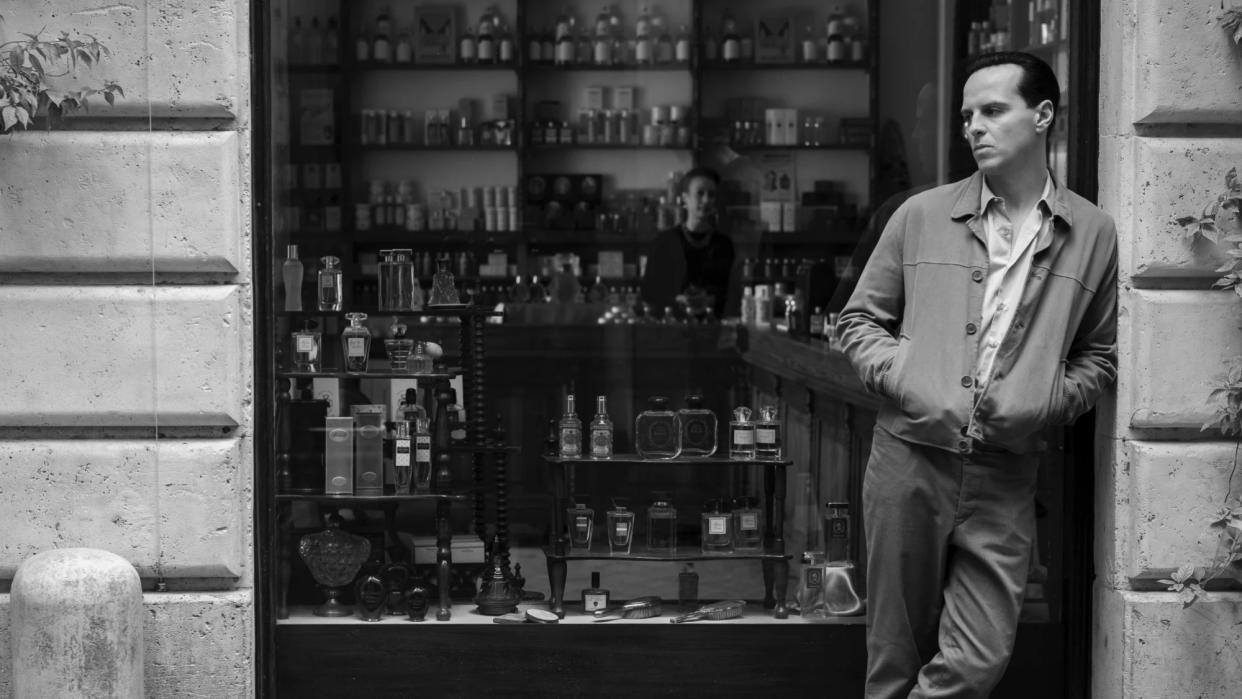Ripley: a 'scintillating and noirish' adaptation

- Oops!Something went wrong.Please try again later.
- Oops!Something went wrong.Please try again later.
- Oops!Something went wrong.Please try again later.
Anyone who has seen the 1999 film "The Talented Mr Ripley" will be "astonished" at how a new Netflix adaption "transforms the same story into something completely different", said movie critic Caryn James.
The big-screen take on Patricia Highsmith's novel secured a string of awards, but the streaming giant's new eight-part series is "just as masterful", James wrote for the BBC. Andrew Scott takes over from Matt Damon in the titular role of Tom Ripley, a con artist sent from 1950s New York City to Italy to convince playboy Dickie Greenleaf (Johnny Flynn) to come home.
Flynn's Dickie is "charming and a bit naïve", said James, making him the "perfect target". And Scott's Ripley "brings a hum of sinister energy" as he worms his way into the privileged world of Dickie and his American girlfriend Marge (Dakota Fanning), and then "usurps the life and identity of his rich friend".
Available now on Netflix
'Aesthetic rather than dramatic'
The action in this "scintillating and noirish" adaptation "moves incredibly slowly", said Lucy Mangan in The Guardian, but that may be " one of the best things about it". The "careful mapping" of Ripley's "every move" allows the tension to mount "exquisitely". One "pivotal" murder scene, said Adam White in The Independent, and the "desperate clean-up" afterwards, becomes "agonisingly tense when stretched to around 20 minutes of screentime".
But the "main draw" of this TV adaption is "aesthetic rather than dramatic", said Dan Einav in the Financial Times. Filmed entirely in "stunning monochrome", the series establishes each location with a "scene-setting collage" of images. "Wonderful details" are accentuated, such as the "liver-spotted hand of a bus driver shifting gear to climb up towards Dickie's village", and "bubbles of champagne in Ripley's glass as he acclimatises to a new life".
'Dark everyman figure'
Appearing in almost every scene, Scott's Ripley is "at the heart of it all", said Mangan in The Guardian. And Scott brings "every ounce of his talent, ineffable charm and lightly reptilian hotness" to the role. The actor has made clear in interviews that "he didn't want to diagnose or define Ripley too closely, which could have been a recipe for either blandness and confusion". Instead, his Ripley is a "dark everyman figure", with "something for everyone to relate to in him".
Scott does a "meticulous job of portraying Ripley's transition from shifty timidity to insolent confidence, from lost boy to aesthete, through subtle shifts of expression and posture", said The New York Times's Mike Hale. As each of Ripley's deceptions succeeds, his eyes "somehow become both softer and more challenging".
Yet for Adam White of The Independent, Scott "feels all wrong for this". Highsmith's novel presented Ripley as an "eerily calm social climber, who is charming and naive when he's not beating people around the head with the oar of a boat". But Scott plays him "more of an overt ghoul – someone oozing sociopathic menace in the corners of fancy ballrooms". In a leather jacket with greased-back hair, he's "more like a lost Mitchell brother than a high-society interloper, and "you never quite get used to it".

